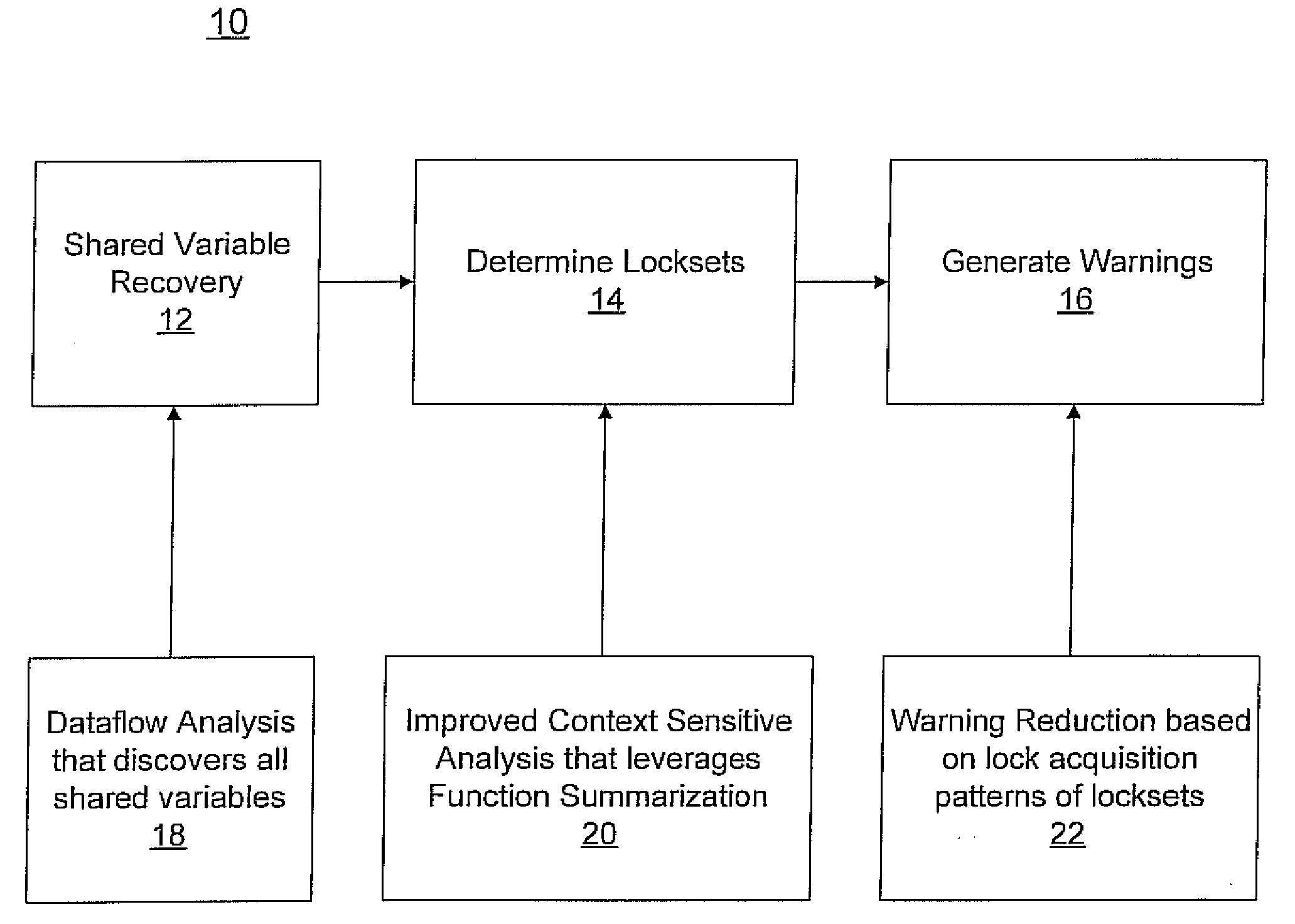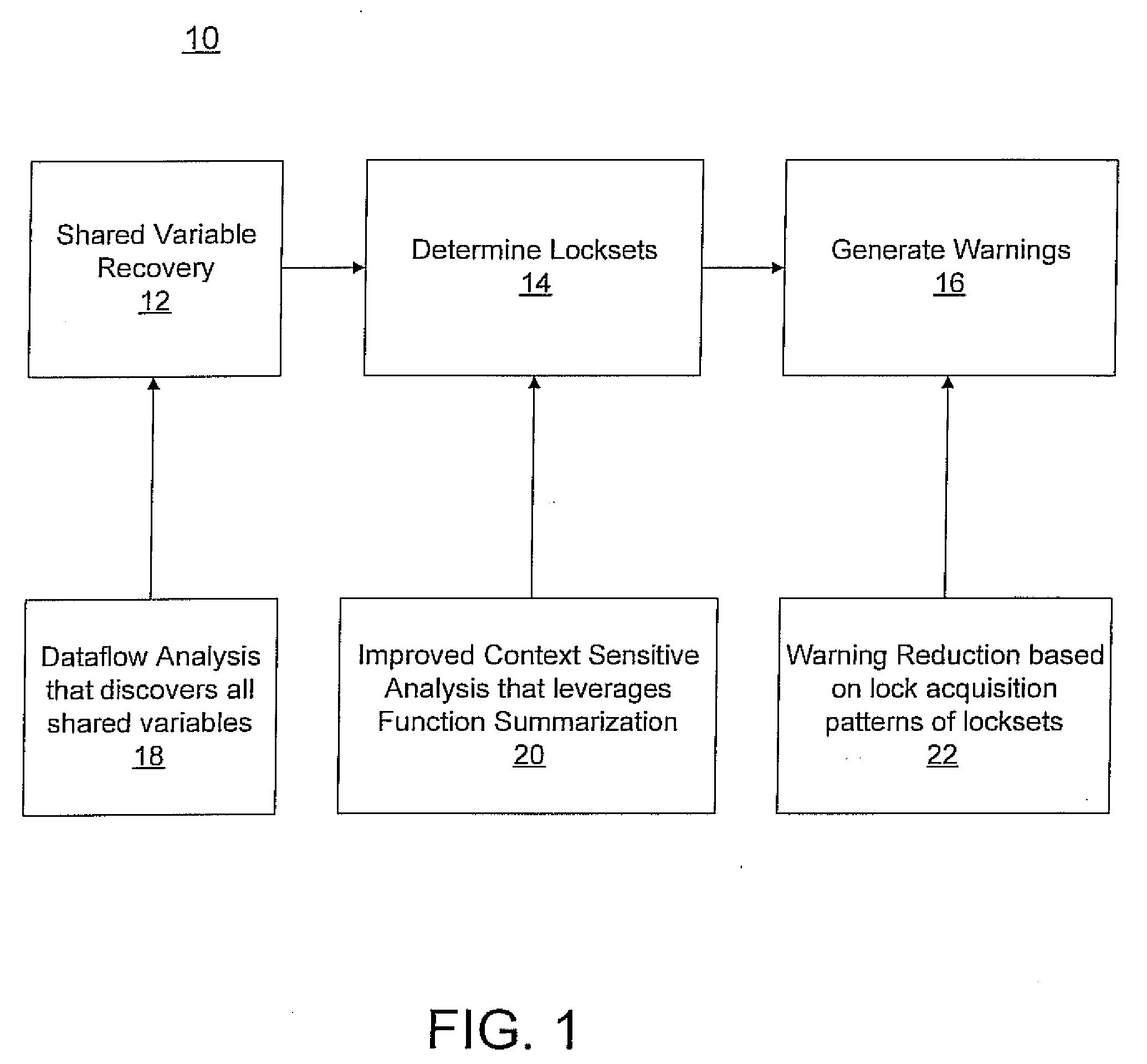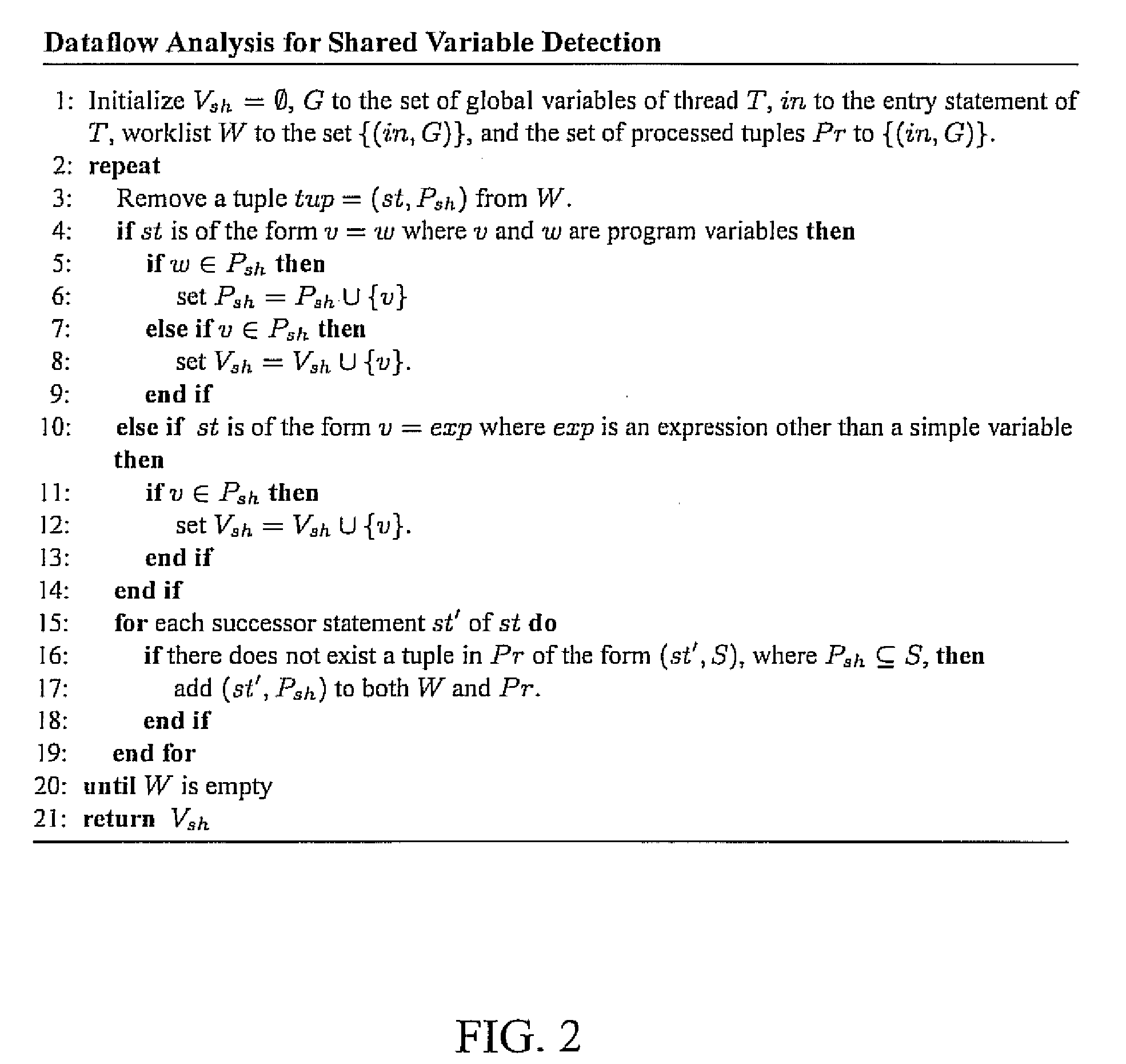Fast and accurate static data-race detection for concurrent programs
a static data and concurrent program technology, applied in the field of computer system verification, can solve the problems of multi-threaded programs, difficult manual analysis, complex behavior, etc., and achieve the effect of reducing the number of warnings and avoiding over-examination
- Summary
- Abstract
- Description
- Claims
- Application Information
AI Technical Summary
Benefits of technology
Problems solved by technology
Method used
Image
Examples
Embodiment Construction
[0034]Present embodiments provide improved solutions for the data race problem in computer verifications systems. New systems and methods are provided for fast, accurate and scalable static race detection in concurrent programs. Focusing the analysis on Linux device drivers permits identification of the unique challenges posed by debugging large-scale real-life code and also pinpointed drawbacks in existing race warning generation methods. This motivated the development of new techniques that helped in improving both the scalability as well as the accuracy of each of the three main steps in a race warning generation system. The first step in data race detection is automatic shared variable discovery. Towards that end, a new, efficient dataflow method is described for shared variable detection which is more effective than existing correlation-based techniques that failed to detect shared variables responsible for data races in majority of the drivers in our bench-mark suite.
[0035]Sec...
PUM
 Login to View More
Login to View More Abstract
Description
Claims
Application Information
 Login to View More
Login to View More - R&D
- Intellectual Property
- Life Sciences
- Materials
- Tech Scout
- Unparalleled Data Quality
- Higher Quality Content
- 60% Fewer Hallucinations
Browse by: Latest US Patents, China's latest patents, Technical Efficacy Thesaurus, Application Domain, Technology Topic, Popular Technical Reports.
© 2025 PatSnap. All rights reserved.Legal|Privacy policy|Modern Slavery Act Transparency Statement|Sitemap|About US| Contact US: help@patsnap.com



